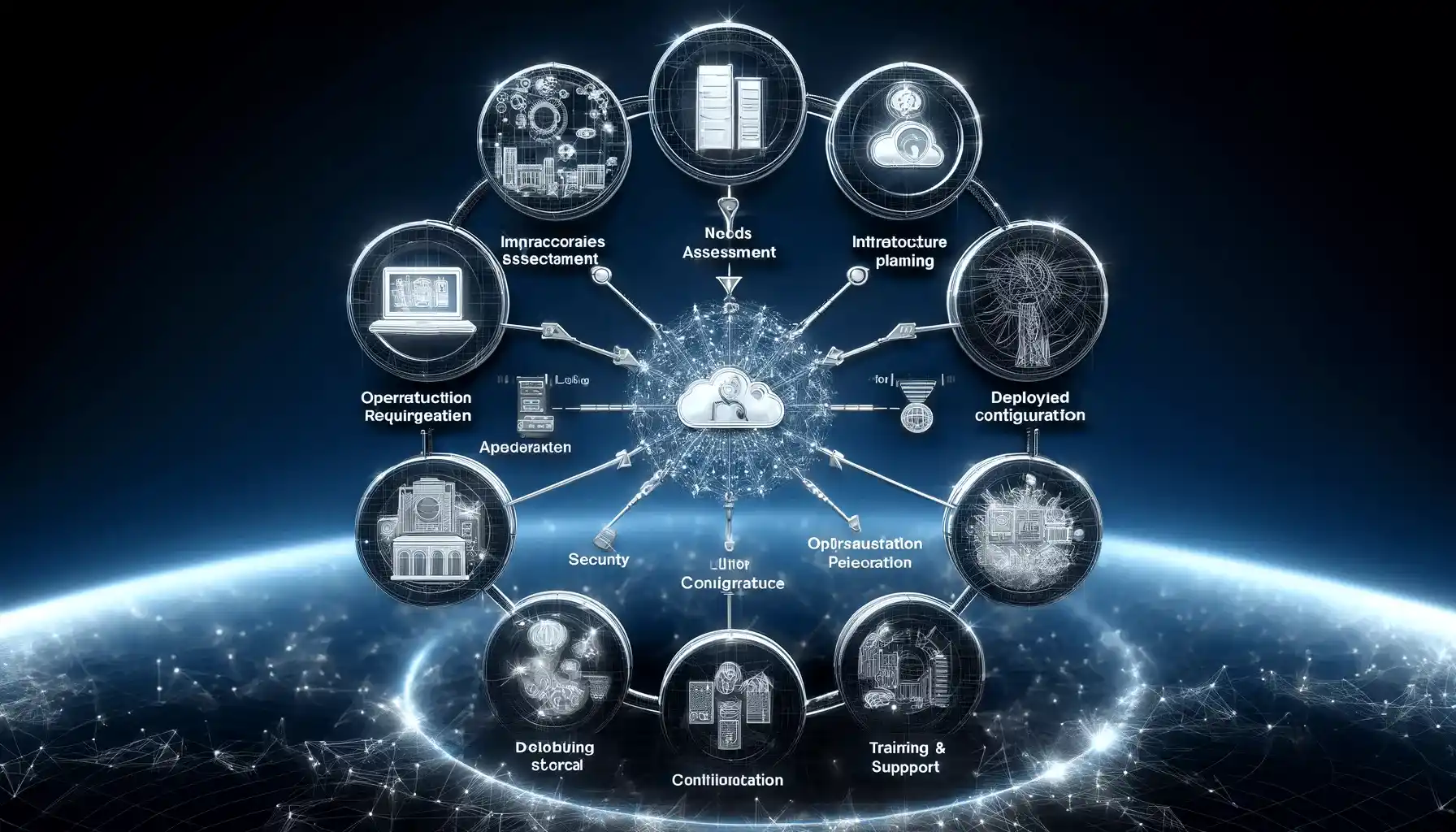Table of Contents
In today’s digital landscape, businesses face a myriad of challenges in managing their technological infrastructure. One solution gaining prominence is on-premise software, offering organizations unparalleled control over their tech environment. In this article, we’ll delve into the concept of on-premise software, explore its benefits and challenges, and provide insights into its implementation.
What Is On-Premise Software?
On-premise software refers to applications and systems that are hosted in-house on a company’s own servers and computing infrastructure. This means that the company purchases the software and installs it on its servers, configuring the necessary operating systems and databases. With on-premise software, the company has full ownership and responsibility for maintenance, repairs, security, and updates.
Traditionally, these solutions were the norm for businesses, offering complete physical control and eliminating the need for recurring monthly fees. However, with the rise of cloud computing and off-site solutions, the landscape is evolving. Many companies now opt for a hybrid IT environment, combining both on-premise and off-premise solutions to meet their diverse needs.
Despite the shift towards cloud-based solutions, It remains relevant for businesses seeking complete control over their technology infrastructure. It allows organizations to maintain ownership of their data and hardware resources while ensuring compliance with regulatory requirements. As technology continues to advance, the choice between on-premise and cloud-based solutions will depend on factors such as security, scalability, and cost-effectiveness, with many companies adopting a hybrid approach to meet their evolving IT needs.

What are the pros and cons of on-premise software?
| Features | Pros | Cons |
|---|---|---|
| Cost | – Overall costs in the long-term are lower | – Substantial upfront investment required |
| Security | – Companies can deploy their security protocols | – Technical IT support is required, increasing costs |
| Control | – Full control to the user | – Trained IT staff is required to provide support |
| User access | – Internet connectivity is often not required for in-house solutions | – Access isn’t available on-the-go |
| Future-proofing | – Additional software can be purchased at extra costs | – No updates are provided, and adding new features is expensive. |
Benefits and Drawbacks of On-Premise Software
Benefits of On-Premise Software:
- Enhanced Control and Security: Organizations have direct oversight of their hardware and software infrastructure, enabling them to implement stringent security measures tailored to their needs.
- Customization Capabilities: These solutions offer greater flexibility for customization, allowing organizations to tailor the software to their unique workflows and integrate seamlessly with existing systems.
Drawbacks of On-Premise Software:
- Upfront Costs: Setting up infrastructure, investing in hardware, and purchasing software licenses entail substantial upfront capital expenditure, making it less accessible for smaller businesses with budget constraints.
- Dependence on IT Staff: It requires dedicated IT personnel for maintenance, updates, and troubleshooting, which can strain resources and slow responsiveness to technological changes.
- Limited Scalability: On-premise may face limitations in scalability, hindering its adaptability to rapidly evolving business needs compared to cloud-based alternatives.
Challenges of On-Premise Software
- Upfront Costs: Implementing software requires significant upfront investment in hardware, software licenses, and infrastructure setup. This initial capital outlay may pose a barrier to entry for some businesses, particularly startups or small enterprises with limited resources.
- Maintenance Overhead: Unlike cloud-based solutions where maintenance and updates are managed by the service provider, on-premise software necessitates ongoing maintenance, patching, and upgrades by internal IT teams. This overhead can strain resources and expertise, especially for complex enterprise systems.
- Scalability Constraints: Scaling software infrastructure to accommodate growth can be challenging and may require additional investments in hardware and resources. Businesses must carefully plan for future scalability to avoid potential bottlenecks and performance issues as demand increases.
- Limited Accessibility: It is typically accessible only within the confines of the organization’s network, restricting remote access and mobility. This limitation may hinder collaboration and productivity for distributed teams or remote workers who require seamless access to applications and data.
- Disaster Recovery Planning: Managing disaster recovery and data backup strategies for software infrastructure is critical to mitigating the risk of data loss or downtime in the event of hardware failures, natural disasters, or cyber-attacks. Implementing robust backup and recovery solutions is essential but adds complexity and overhead.
Implementing On-Premise Software
- Needs Assessment: Begin by conducting a thorough assessment of your organization’s needs, including operational requirements, security considerations, compliance obligations, and budget constraints.
- Infrastructure Planning: Determine the hardware and infrastructure requirements for hosting on-premise software, considering factors such as processing power, storage capacity, network bandwidth, and redundancy.
- Software Selection: Choose software solutions that align with your business objectives and technical requirements. Evaluate vendors based on factors such as functionality, scalability, reliability, support services, and total cost of ownership.
- Deployment and Configuration: Work with IT professionals to deploy and configure software according to best practices and industry standards. Ensure proper integration with existing systems and data migration procedures to minimize disruption to operations.
- Training and Support: Provide comprehensive training and support to end-users to familiarize them with the new software and ensure effective utilization. Establish protocols for ongoing maintenance, updates, and technical support to address any issues promptly.

Related Post:
Cloud Technology: 5 Powerful Mastery for Enterprise Software
Conclusion:
On-premise software presents businesses with a valuable opportunity to exercise greater control over their technological infrastructure, ensuring security, customization, and compliance with regulatory standards. While the upfront costs and maintenance overhead may pose challenges, the benefits of enhanced control and data sovereignty often outweigh these drawbacks for organizations prioritizing security and flexibility. As businesses navigate the dynamic digital landscape, the choice between on-premise and cloud-based solutions will depend on factors such as security requirements, scalability needs, and budget considerations. By carefully evaluating their unique operational needs and strategic objectives, businesses can effectively leverage on-premise software to optimize their technology infrastructure and drive innovation in today’s digital economy.





